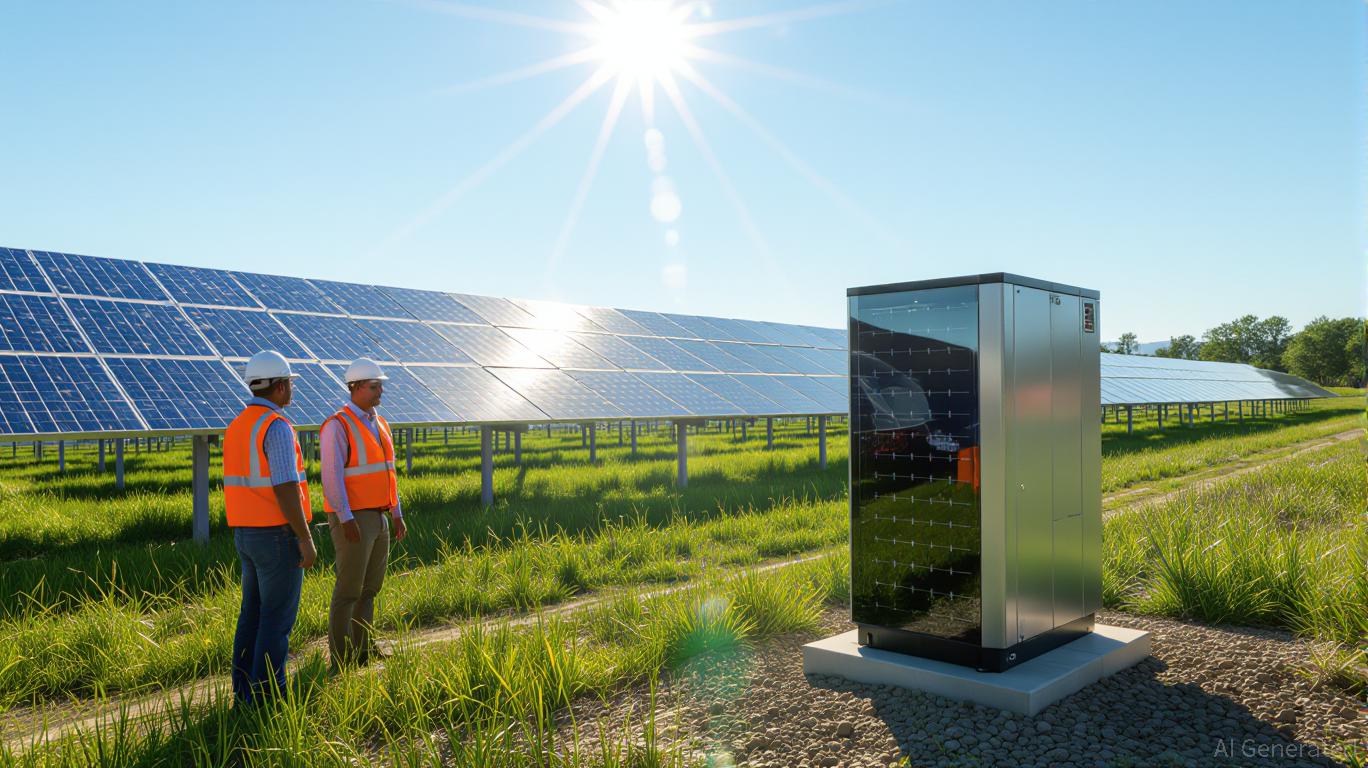
Alliant Energy’s Q2 2025 Non-GAAP earnings of $0.68 per share, a 19.3% year-over-year increase, underscore a compelling narrative of resilience and strategic adaptability in the face of a rapidly evolving energy landscape. For investors seeking long-term value in the clean energy transition, the utility’s performance offers a masterclass in balancing regulatory navigation, capital deployment, and ESG-driven innovation.
Earnings Growth: A Product of Regulatory Mastery and Capital Discipline
The Utilities and Corporate Services segment, which contributed $0.74 per share to Non-GAAP EPS, was the primary growth engine. This was fueled by two key factors:
1. Regulatory Tailwinds: The $185 million annual base rate increase approved for Interstate Power and Light Company (IPL) in September 2024 added $0.13 per share to Q2 earnings. Similarly, Wisconsin Power and Light Company’s (WPL) 2023 rate increase contributed $0.06 per share. These approvals reflect Alliant Energy’s ability to secure rate base growth in a regulatory environment increasingly supportive of clean energy investments.
2. Capital-Driven Efficiency: The company’s $1.2 billion annual capital expenditure plan, focused on solar generation and energy storage, is generating returns through higher revenue requirements. For instance, the Columbia Energy Storage Project—a $30.7 million federally funded initiative—positions Alliant Energy to monetize grid stability services while aligning with decarbonization goals.
Despite a $0.10 per share drag from the Non-utility and Parent segment, the company reaffirmed its 2025 EPS guidance of $3.15–$3.25, assuming normal weather and stable economic conditions. This confidence stems from its disciplined cost management and the absence of one-time charges (e.g., the $0.23 per share adjustment in Q2 2024 related to asset retirement obligations).
Strategic Positioning: Clean Energy as a Competitive Moat
Alliant Energy’s Energy Blueprint—a roadmap to achieve 40% renewable energy by 2030—has already delivered measurable results. The company’s solar portfolio now accounts for 12% of its generation mix, with 1.2 GW of capacity under development. This aligns with a broader industry trend: utilities that integrate distributed solar and storage are outperforming peers in earnings stability and shareholder returns.
The Columbia Energy Storage Project exemplifies this forward-thinking approach. By leveraging CO2-based storage technology, Alliant Energy is not only reducing emissions but also creating a scalable model for grid resilience. Such projects are critical for utilities navigating the dual pressures of decarbonization and grid modernization.
ESG and Shareholder Value: A Symbiotic Relationship
Alliant Energy’s ESG initiatives are no longer just reputational assets—they are profit centers. The company’s phosphate reduction efforts in the Rock River watershed, for example, mitigate regulatory risks while enhancing water quality. Similarly, its Nutrient Trading Plan creates a market-based mechanism for environmental compliance, reducing costs and fostering innovation.
Socially, the company’s Women in Technical Energy Careers program and $9 million in community investments reinforce its role as a corporate citizen. These efforts align with the growing demand for ESG transparency among institutional investors, who now allocate over $30 trillion to sustainable portfolios globally.
Risks and Opportunities in a Shifting Landscape
While Alliant Energy’s Q2 results are robust, investors must remain cognizant of headwinds:
– Non-utility volatility: The drag from corporate venture investments and financing costs highlights the need for the company to focus on its core regulated utility operations.
– Regulatory uncertainty: Accelerated clean energy mandates could require additional capital outlays, though Alliant Energy’s strong balance sheet (debt-to-EBITDA of 3.2x) provides flexibility.
However, the company’s strategic alignment with the U.S. Department of Energy’s clean energy grants and its proactive engagement with state regulators position it to capture market share in the $1.2 trillion clean energy infrastructure sector.
Investment Thesis: A Core Holding for Sustainable Portfolios
For investors prioritizing long-term capital appreciation and ESG alignment, Alliant Energy offers a compelling case. Its earnings growth is underpinned by:
– Regulatory capital: A 9.5% return on equity (ROE) target, supported by rate base expansion.
– Clean energy scalability: A $1.2 billion annual capex plan focused on solar and storage.
– Dividend reliability: A 2.5% yield with a 10-year CAGR of 6.8%.
Conclusion: Alliant Energy’s Q2 2025 results are more than a quarterly win—they are a testament to the company’s ability to transform regulatory challenges into earnings drivers. As the clean energy transition accelerates, utilities that combine operational discipline with innovation will outperform. Alliant Energy, with its strategic clarity and ESG-first approach, is poised to be a cornerstone of sustainable energy portfolios.
Investment Recommendation: Buy for long-term holders seeking a utility with a clear path to decarbonization and earnings growth. Monitor regulatory developments in Iowa and Wisconsin, and consider adding to positions during market corrections in the broader utility sector.
